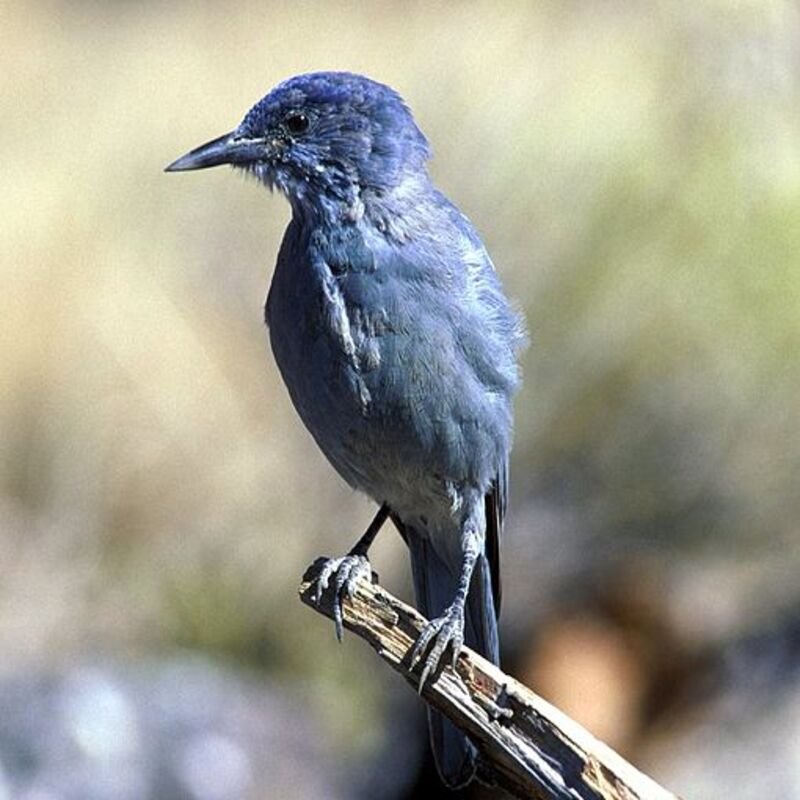The pinyon jay, Gymnorhinus cyanocephalus is a medium-sized jay that is similar in size to the North American blue jay and the Eurasian jay. The voice is described as a two- or three-times repeated rhythmic krawk-kraw-krawk. Gymnorhinus is the genus’s sole representative. Its overall dimensions are quite similar to those of a nutcracker, and this can be interpreted as convergent evolution, given both birds occupy comparable ecological niches.
Quick Overview: Gymnorhinus Cyanocephalus – Pinyon Jay
Body size: Around 10.5 in (27 cm) and a weight of 102 g (3.6 oz)
Main colors: Blue, White, Black
Range: Western United States
Migratory Bird: No
Best time of the year to see in the U.S.: All Year (January – December)
Conservation Status: Least Concern
Pinyon Jay Description
ThIt is mostly blue in color, with white breast and underparts and a blue crest; it wears a black, U-shaped collar around its neck and a black border behind the crest. Males and females are comparable in size and plumage throughout the year.

Size
These birds have a length of 10.5 in (27 cm) and a weight of 102 g (3.6 oz). Their wings could range from 15 in (38 cm).
Feeding
Pinyon jays also consume bristlecone pine (Pinus aristata) seeds, limber pine (Pinus flexilis) seeds, and juniper berries. When insects, soft vegetation, and pinyon seeds are abundant, nestlings devour them.
Habitat
Pinyon jays inhabit arid mountain slopes and foothills adjacent to pinyon-juniper forests. It is also found in communities of sagebrush, scrub oak, and chaparral, as well as pine woods.
Behavior
Pinyon jays form huge groups, sometimes exceeding 250 to 500 individuals since they keep an eye out for predators while their partners eat seeds. They spend the majority of their time seeking seeds to consume immediately, conceal in the ground, or store in a tree fissure for later use. They seek protection among pinyon, western juniper, and ponderosa pine trees. Rarely do roosting locations occur in the region that was last utilized for foraging that day. A flock of pinyon jays in northern Arizona traveled 1 to 3 miles from the feeding spot before roosting. Roosting birds congregated in groups of three to five individuals.
Gymnorhinus Cyanocephalus Scientific Classification
- Kingdom: Animalia
- Phylum: Chordata
- Subphylum: Chelicerata
- Class: Aves
- Order: Passeriformes
- Family: Corvidae
- Genus: Gymnorhinus
- Species: Gymnorhinus cyanocephalus
Best time of the year to see
In the United States, the best time of year to see these birds is all year round, regardless of the season. This refers to any month of the year between January and December.
Distribution of the Pinyon Jay in the USA
From northern Oregon and Montana through eastern California, central Arizona, New Mexico, and extreme northwestern Oklahoma, this species is a resident. From west Texas to North Dakota, it may appear as a seasonal vagrant.
The Pinyon Jay can be found in the following states in the United States – Colorado, Idaho, Nevada, South Dakota, Utah, and Wyoming.

